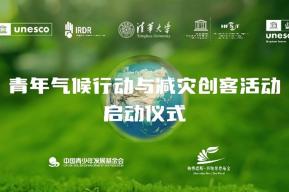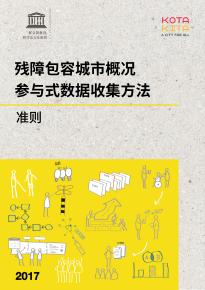观点
海外华人:漫长的历史

中国是继印度和墨西哥之后移民海外人数最多的国家。自从古代海上丝绸之路开通,便有一代又一代华人远走海外,书写了一部源远流长的中国移民史。
庄国土
中国福建省华侨大学客座教授,厦门大学教授,主要研究中华民族史和中国国际关系史,国务院侨务办公室专家咨询委员会委员
国际移民组织(IOM)的数据显示,海外华人移民目前超过1070万,如果算上他们的子孙后代,总数约有6000万。
这是全球最庞大的移民群体之一。中国的移民史由来已久——始于2000多年前华人开通海上丝绸之路,那时的移民主要迁往东南亚。到15世纪初,苏门答腊岛和爪哇岛(今印度尼西亚)已经建起了几座华埠,分别居住着数以千计的海外华人。
大规模移民是从16世纪末开始的。当时,欧洲人已经在远东站稳了脚跟,打算将这片地区纳入世界贸易网。欧洲各国竞相发展和扩张在东南亚的殖民地,对中国商人和劳工的需求应运而生。
17世纪初,东南亚约有10万海外华人,日本约有2到3万,他们主要从事贸易和手工业。到19世纪中叶,海外华人已经发展到150万,大部分居住在东南亚。在日华人也已经融入了日本社会。
两次鸦片战争的影响
中国的第二次移民潮出现在19世纪中期到20世纪40年代初。非技术工人,也就是所谓的“契约华工苦力”,是这次移民潮的主流。经过19世纪中期的两次鸦片战争,英国和法国迫使清政府批准大量中国劳工前往西方国家及其殖民地,以替代黑奴。中国人从此开始走向世界各地——从东南亚到美洲、非洲、欧洲和澳大利亚。
第一次世界大战结束之后到第二次世界大战在太平洋地区爆发之前,东南亚经济一度繁荣,进一步刺激了对劳动力的需求,而中国移民刚好满足了这项需求。到20世纪40年代初,世界各地的华侨达到850万左右,其中90%以上生活在东南亚。
1949年,中华人民共和国成立,国家不再允许大规模移民,延续了300多年的华人移民潮就此中断,这样的状况持续到了20世纪70年代末。
第三次华人移民潮始于20世纪80年代,是当时全球移民浪潮的一部分。大多数移民来自中国大陆,也有部分来自中国台湾和中国香港,他们主要迁往工业化国家。当时华人移民海外的首选目的地是美国。
20世纪80年代,中国移民主要迁往工业化国家
近年来,由于中国经济快速增长、对外贸易发展,大批中国人选择前往发展中国家。进入中亚、西亚、非洲和拉丁美洲的中国移民数量激增。
修建铁路和开采金矿
无论是在东南亚的热带国家,还是在欧洲和美洲的温带国家,海外华人都为建设新家园贡献良多。18世纪的东南亚,是他们率先修筑公路,开垦荒地;19世纪的美国,他们建设了港口和城市,并开采黄金;20世纪的欧洲,他们修建了铁路,开起餐馆和杂货店。
中国移民有着勤劳节俭的传统,为安然度过经济难关,他们往往会攒钱投资房产,并由此在社会上赢得一席之地。每当危机来袭,海外华人总是有能力自保,一般不用向亲朋好友求助,更别说向陌生的社会求援。
海外华人与祖国依然保持着紧密的联系。他们视中国为故土,这种眷恋之情往往会传递给子孙后代。华人移民的一个主要原因是为了接济家乡的亲朋,通过汇款从经济上帮助家人是海外华人的传统。近百年来,华侨还参与了中国的现代化建设。20世纪80年代以来,中国政府接受的外国投资中有超过三分之二来自海外华侨。
特征和成见
海外华人以勤劳节俭著称。在世界各地,华侨的另一个显著特点是重视对下一代的教育。中国人自古以来就认为“万般皆下品,唯有读书高”。海外华人家庭——无论贫富,都愿意为确保子女得到最好的教育而作出牺牲。
在世界各地,华侨的另一个显著特点是重视对下一代的教育
这些特点有时加深了外界对于华人移民群体的成见,也进一步扩大了华人与所在国家其他社会群体之间的鸿沟。
然而,面对如此庞大的移民群体,不可能一概而论。在多种文化不断相互交流的全球化世界里,凡试图给某些群体贴标签的做法都是缺乏远见和理性的。世界正在日益走向融合,而海外华人也在这个过程中不断探索和确立自己的身份。当新型冠状病毒肺炎疫情暴发,针对东亚族裔的歧视随之而来,要解决这些问题不可能一蹴而就。不过,海外华人几百年来已经形成了抵御这些成见的能力,或许可以帮助他们应对难题。
拓展阅读:
《移徙、流离失所和教育:要搭建桥梁,不要筑起高墙》,联合国教科文组织《2019年全球教育检测报告》
《中国深山孩子教育的“启明星”》,联合国教科文组织《信使》,2019年10-12月
订阅联合国教科文组织《信使》,阅读发人深省的时事文章,数字版免费。
在社交网络上关注联合国教科文组织《信使》:微博、微信公众号“联合国教科文信使”、Twitter、Facebook、Instagram。
By Zhuang Guotu
There are more than 10.7 million Chinese overseas today – about 60 million, if their descendants are included – according to the International Organization for Migration (IOM).
This is one of the highest figures of immigration in the world. But the history of Chinese migration is ancient. It began with the opening of the maritime Silk Road over 2,000 years ago, with immigrants moving mainly to Southeast Asia. By the early fifteenth century, several Chinatowns – each hosting thousands of overseas Chinese – were established in Sumatra and Java (present-day Indonesia).
But it was at the end of the sixteenth century that large-scale migration began. Meanwhile, Europeans had established themselves in the Far East, with the intention of integrating the region into the world trade network. They competed with each other to expand and develop the colonies in Southeast Asia, creating a demand for Chinese traders and workers.
By the beginning of the seventeenth century, there were about 100,000 overseas Chinese in Southeast Asia, and around 20,000 to 30,000 in Japan. They were mainly engaged in trade and crafts. By the mid-nineteenth century, their numbers had increased to 1.5 million, with most of them settled in Southeast Asia. In Japan, they integrated into Japanese society.
The impact of the Opium Wars
From the middle of the nineteenth century to the early 1940s, a second wave of migration started in China. Unskilled labourers, or so-called “Chinese contracted coolies”, formed a major part of this wave. Through the two Opium Wars in the mid-nineteenth century, Britain and France forced the Qing government to authorize a massive exodus of Chinese labourers to western countries and their colonies, to replace black slaves. This was the beginning of the dispersion of the Chinese across the world – from Southeast Asia to America, Africa, Europe, and Australia.
After the First World War, and before the Second World War broke out in the Pacific, the economic prosperity of Southeast Asia further stimulated the demand for labour, that was met by Chinese immigrants. By the early 1940s, there were around 8.5 million Chinese expatriates worldwide – over ninety per cent of them in Southeast Asia.
From 1949, when the People’s Republic of China was founded, to the late 1970s, large-scale migration was no longer permitted. The tide of overseas Chinese immigration that had continued for more than 300 years was interrupted.
A third wave of new Chinese migrants started in the 1980s, and was an integral part of the surge of global migration. The majority of migrants came from mainland China, but also from Taiwan, and Hong Kong. They moved mainly to industrialized countries – the top destination for overseas Chinese at the time was the United States.
Starting in the 1980s, Chinese migrants moved mainly to industrialized countries
China’s rapid economic growth and the development of foreign trade relations in recent years have seen a large number of Chinese move to developing countries. The population of Chinese migrants has soared in Central and Western Asia, Africa, and Latin America.
Railroad construction and gold mining
The overseas Chinese made significant contributions to their new societies. Whether in the tropical countries of Southeast Asia, or in the temperate nations of Europe and America, they pioneered the construction of roads and reclaimed wasteland in Southeast Asia in the eighteenth century. They built ports and cities; mined gold in the US in the nineteenth century; constructed railroads, and opened restaurants and grocery stores in Europe in the twentieth century.
With a tradition of hard work and frugality, Chinese migrants tend to earn their place in society by saving their income and investing in property to tide them through economic hardship. So when a crisis hits, they are invariably able to take care of themselves before seeking help from family and friends – let alone the new society in which they live.
The overseas Chinese continue to have strong ties to their home country. They believe that China is their homeland – an attachment that often lasts for generations. One of the main reasons they migrate is to be able to support their families and friends – they have a culture of making remittances to help those at home financially. For nearly a century, the Chinese diaspora has also participated in China's modernization. Since the 1980s, over two-thirds of the foreign investment accepted by the Chinese government has come from expatriates.
Characteristics and stereotypes
The overseas Chinese have a reputation of being hard-working and thrifty. Another distinctive trait of the diaspora worldwide is the importance they place on educating the next generation. “All work is inferior, only reading is superior,” is an old Chinese belief. Whether they are rich or poor, Chinese families abroad are willing to make sacrifices to ensure that their children get the best education possible.
A distinctive trait of the Chinese diaspora worldwide is the importance they place on educating the next generation
These characteristics have sometimes fuelled stereotypical perceptions of Chinese immigrant communities that have further widened the chasm between them and other social groups in their destination countries.
However, it is difficult to make generalizations about such a large group of migrants. In a globalized world where cultures are constantly in communication, any attempt to label certain groups of people is short-sighted and irrational. Overseas Chinese have continued to explore and build their identities in this increasingly integrated world.
In the context of the Covid-19 pandemic, where discrimination against people of East Asian descent has erupted, these challenges cannot be resolved overnight. But the Chinese abroad have developed a resilience to such stereotypes over the centuries, which could be useful while confronting these hardships.
Zhuang Guotu
Chair Professor of Huaqiao University and a professor at Xiamen University, in China’s Fujian province. His research focuses on the history of ethnic China and the history of the country’s international relations. He is also a member of the advisors committee of the State Council for Overseas Chinese Affairs.







